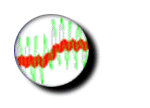This site provides a collection of interactive exploratory tools in medicine and the biosciences, with a focus on the areas of epidemiology (study of the spread of diseases), pharmacokinetics (the study of drug interactions in the body), and physiology (the study of how the body works). Many of these models have been created by students working at Shodor or students from
the Biomedical Engineering Concentration in the Biological Engineering
degree program at North Carolina State University, working collaboratively with Shodor scientists and educators.
Genomics Models:
Physiology Models:
|
Baroweb: a model of the heart and nervous system, explore how blood pressure is regulated!
|
| CADweb: a risk-assessment tool. This statistical tool helps patients to evaluate their risk for coronary artery disease. |
| Cardioweb: a simple model of the heart using the Windkessel model. Explore the control of cardiac output in healthy and sick patients! |
| Cholesterol: a simple model of human cholesterol levels. Create your own test cases and discover the cholesterol level associated with each. |
| Glycolysis: models the
concentrations of glucose and other chemicals over a short span of
time, demonstrating the process of glycolysis |
| Dialysis: investigates the role of the kidneys in filtering impurities
from the bloodstream. NOTE: this resource was created by biomedical engineering students
at North Carolina State University. The site continues to be hosted by Shodor, but is no longer
updated or otherwise maintained by Shodor staff
|
| AIDA: large diabetes simulation project, a joint effort between
Shodor, the Biomedical Engineering department at North Carolina State University, and Diabetes Insighth (UK).
|
Pharmacokinetic Models:
Penicillin:
Investigate the
pharmacological behavior of penicillins |
Flucytosine:
Investigate the
pharmacological behavior of flucytosine. |
Regimen:
Investigate the
pharmacological effects of various dosing regimens. |
Epidemiology Models:
Simple Flu Model:
an implementation of the SIR (susceptible - infected - recovered) algorithm |
SIR Epidemic Model:
an
implementation of the SIR (susceptible - infected - recovered) algorithm
where you can modify the information about the disease |
Related Information:
Last Update:
Please direct questions and comments about this page to gotwals@shodor.org
© Copyright 1998, The Shodor Education Foundation, Inc.
|
